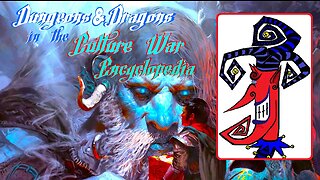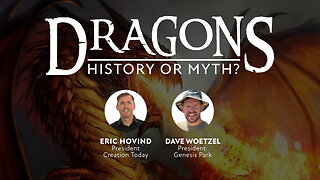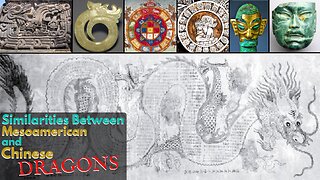Dragon Mythology & History - Full Documentary
As one of the most popular mythological creatures in modern day, the dragon is no mystery. It does, however, have a lengthy history that many people are unaware of. When most people envision a dragon, they think of a large reptile-like creature with enormous wings that breathes fire and attacks castles. However, like all creatures of ancient lore, the dragon had more humble beginnings.
Dragon mythology has existed almost as long as people have. In fact, many of the early Mesopotamian cultures and other ancients in the Near East have rich oral histories that tell of mighty storm gods saving the people from evil giant serpents. These serpents often had many terrifying features, ranging from fluorescent skin to the ability to breathe fire and fly. These myths were the foundation of the modern perspective on dragons.
So how can one accurately describe the fearsome dragon? For starters, it seems that a dragon is actually any form of serpent that has an especially fearsome nature. This is indicated by the word ‘drakon’ that the English word ‘dragon’ was derived from. ‘Drakon’ means ‘large serpent’ or ‘sea serpent.’ Additionally, most dragons are described as being evil in nature. This is not always the case, however, as evidenced by Chinese mythology. There are times that dragons are also shown as benevolent and knowledgeable creatures.
The Evolution of the Dragon
In early cultures, the dragons were often seen as mighty serpents and beasts that were either extremely benevolent or fearsome and difficult to kill. The beliefs of a region are often influenced by geographical location. Eastern cultures often saw dragons as a knowledgeable deity that had power over storms and water. Additionally, they also saw the dragon as a powerful and benevolent creature that could ward off evil.
Western cultures had a very different perspective. They often saw dragons as evil beasts that reveled in killing and chaos. Many dragons are depicted as living in dark and dangerous places that were often perilous for men in ancient times. Additionally, they were often thought to guard hoards of treasure.
In both cultures, dragons were largely thought to be wingless before the Medieval Ages. During this time, the Western cultures began to transform their dragon portrayals, while the Eastern cultures continued with their traditions.
Myths Associated with Dragons
While many people know that dragons are thought to guard hoards of treasure, there are also other myths that still surround the creature. One such myth is that dragon’s blood held special properties that gave anyone with access to it unique opportunities. If, for example, a person was to dip a sword or knife into dragon blood and stab someone with it, their wound would never heal. However, not all things associated with dragon blood are bad. It is also thought that dragon blood gives a person the ability to see into the future.
It is also thought that dragons from the Eastern world have the ability to change size and shape. In fact, most of the dragons from Eastern legends have the ability to change into human form at will.
Ancient Indian sources like the Rig Veda (one of the oldest texts in the world, dated around 1500 BCE) speak of the great dragon Vrtra, who had to be killed by the god Indra to release the waters of heaven onto earth. In Mesopotamian myths, the god Marduk battled with the dragon Tiamat for supremacy over human beings. And in the Zoroastrian tradition of Iran, dragons were known as “azi” or “serpents,” and had important roles in scriptures, mostly as demonic creatures “who swallowed horses, who swallowed men… over whom poison flowed the height of a spear.”
-
 58:22
58:22
CultureWarEncyclopedia
1 year agoDUNGEONS & DRAGONS in the Culture War Encyclopedia
8 -
 1:24:10
1:24:10
SciFi4Me TV
1 year agoThe H2O Podcast 340: DUNGEONS & DRAGONS Review
166 -
 0:33
0:33
SimulTV
8 months agoFantasy Myths & Legends
6 -
 5:06
5:06
MatthewDBickel
2 years agoDungeons and Dragons 5D: Getting Started with D&D
841 -
 38:30
38:30
AncientMyteriesUnearthed
1 year agoDRAGONS | Real or Mythology? Video Footage of Supposed Dragons & Worldwide Accounts of Dragons
4101 -
 38:49
38:49
Creation Today
8 months agoDRAGONS: History or Myth? | Eric Hovind & Dave Woetzel | Creation Today Show #237
54 -
 1:22:56
1:22:56
Blue_Samurai_Zero
1 year agoBetween Ballads & History 01 - Arthurian Legends Part 1
2 -
 5:24
5:24
Diablodelta
9 months agoTutorial Online Dungeons & Dragons HD
8 -
 20:03
20:03
Tales Of The Olde World
10 months agoSurprising Connections between Chinese and Mesoamerican DRAGONS | History Documentary
3025 -
 2:56
2:56
Black Box Game Trailers
6 months agoDragon's Dogma 2 - Story Overview
49